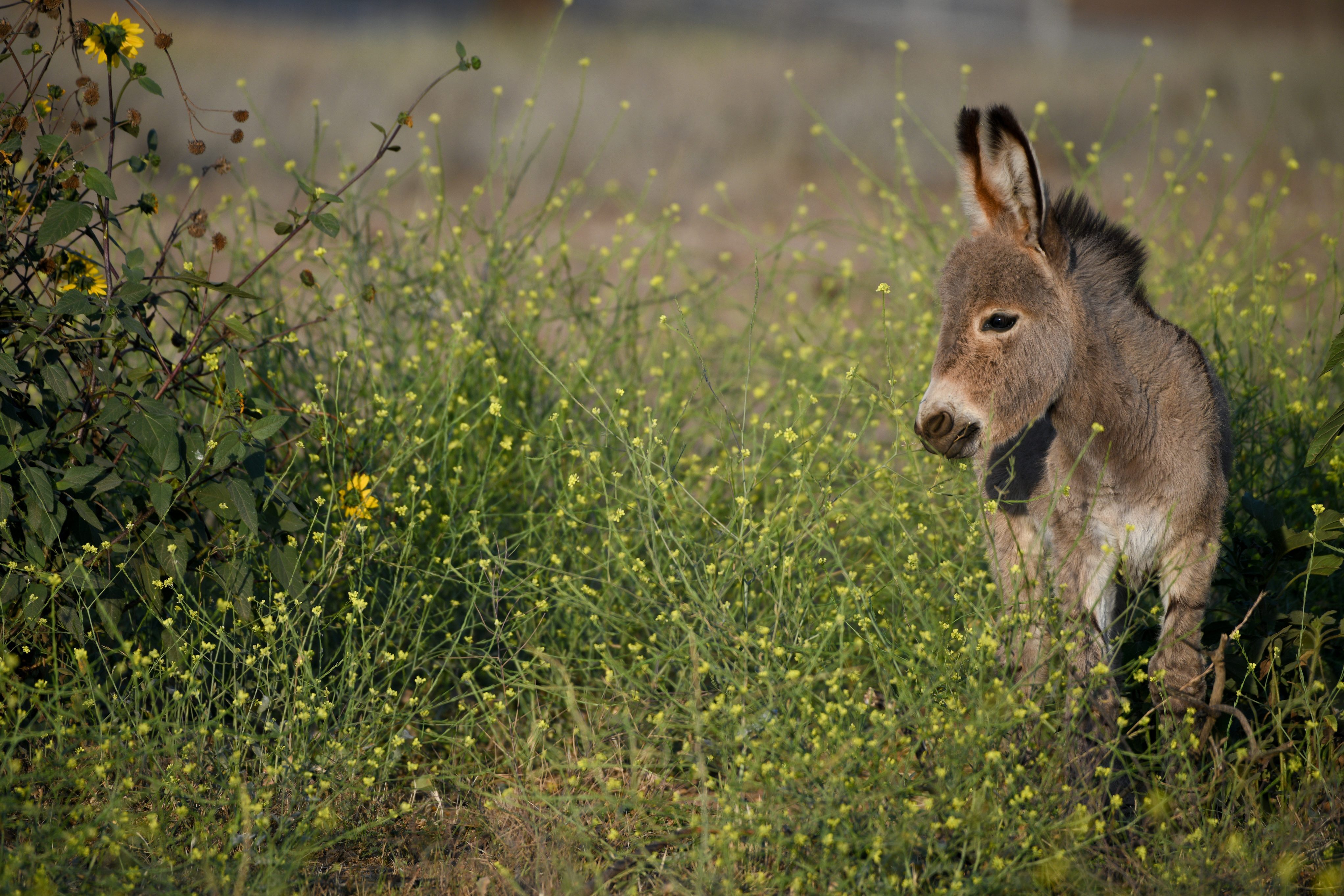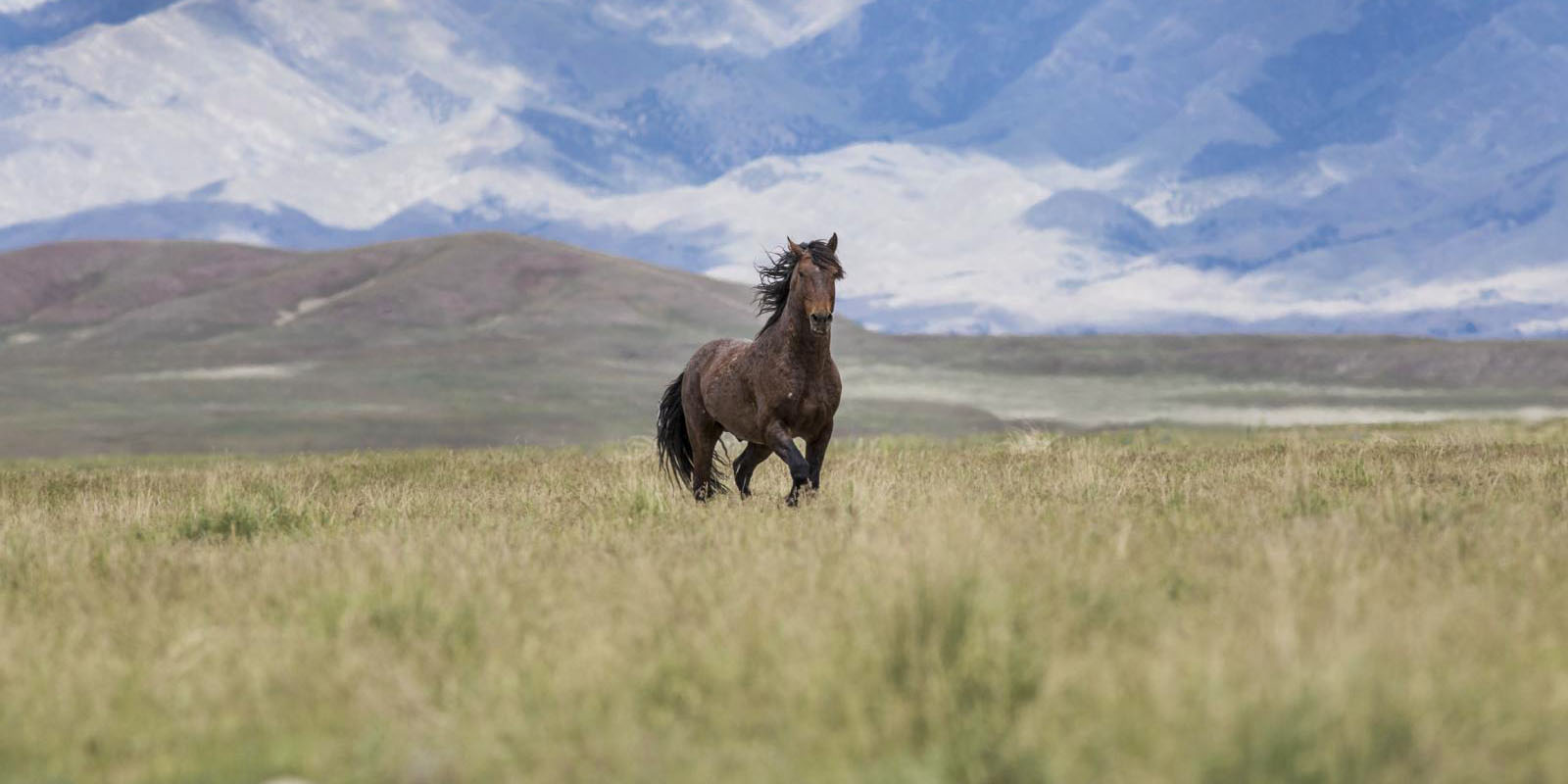If you haven't already, start with Part I
Healers of the Land
Burros in the wild are part of an intricate web that benefits the ecology. Like other wild equids, they stay on the move and have radically different land impacts from livestock. Cattle are sedentary and like to monopolize water sources, trampling fragile plants and soil surrounding riparian areas. Burros remain on guard against predators; they’ll drink and move to higher ground. No evidence says they compete with livestock or wildlife for forage. On the contrary, burros browse on coarser vegetation and remove dead-stem grass layers. Cattle that graze in areas with wild burros have been observed to gain weight, since equids do not fully digest seeds, but spread them in what researcher Dan Rubenstein calls a “facilitative relationship” with ungulates.
Burros fertilize the land through their widely spread droppings, whose intact seeds are a crucial food source for many birds and insects. They graze down the brush and other fire-prone vegetation. In a study of wild burro grazing in the Mojave Desert, Scott Abella of the University of Nevada Public Lands Institute found that cessation of their grazing increased invasive species.
Biologist Erik Lundgren from the University of Technology Sydney studies the ecological impact of Death Valley’s wild burros, which he discovered digging water wells over a meter deep which attract a myriad of other species, among them bighorn sheep. Over time they become vegetation nurseries, bringing resilience to the desert ecosystem. “You go out to these sites and the only surface water comes from these excavations by wild burros, where they’ve dug out the soil and vegetation to make pools,” Lundgren says. “And it’s really the only water in many of these landscapes. So my first question is: What happens when you remove the animals keeping these wells open?”
Running Down the Range
Like wild horses, burros are targeted for removal in large part because a small but powerful group of ranchers who profit from grazing permits want them gone. While the BLM scapegoats wild equids for range damage, it permits commercially owned cattle and sheep to graze our public lands barren.
Intense industry lobbying and internal pressure from corrupted mid-to-high level officers underlie the BLM’s decisions. This politicization of public land stewardship is a classic case of regulatory capture. It harms the burros, American taxpayers and the range ecology.
The welfare ranchers want all they can get. And they get it. Over 2 million cattle and sheep graze on Western public lands, compared to 17,780 wild burros, according to BLM’s inflated burro population estimates. Livestock grazing on public lands produce only 2 percent of America’s meat yet enjoy enormous government subsidies. The monthly cost to graze a cow/calf pair on federal lands equals the cost of a can of dog food and is less than 10 percent of a private lease.
In the arid and semi-arid climates of the American West, cattle trample soil crusts. They congregate by riparian areas, damaging sensitive vegetation and polluting the water. They do great harm to wildlife, not only by competing for forage, but also by triggering government programs to slaughter predators.
Taxpayers absorb the indirect costs of public grazing, including extermination programs, road construction, aerial hay drops for cattle, increases in invasive species and wildfire hazards, water pollution, the destruction of fish, wildlife and native plant species, habitat loss, and desertification.
What Can Be Done
Change will only happen when citizens insist that land management agencies act to preserve, not harass and eject these threatened animals. The Department of Interior needs to shake off its livestock welfare yoke and start putting the goals of the 1971 WFRHB Act to work. That means ending traumatic helicopter roundups for burros and wild horses. Reversing the removal system and “zeroing out” – the BLM’s term for its decisions to close 41 percent of habit designated by law for wild equids. It means rewilding the tens of thousands of captive burros and mustangs now languishing in holding pens; establishing a wild burro range exclusive of livestock in Arizona’s Black Mountain region; allowing the return of predators; ending the BLM’s corrupt Adoption Incentive Program. Congress needs to pass the SAFE Act, prohibiting the export of equines for slaughter, and Ejiao legislation to ban the sale or transport of Ejiao in interstate or foreign commerce.
Most critically, the BLM must revise its arbitrary, absurdly low AMLs and end a forage allotment system that privileges cattle and short ends wild equids, permits millions of privately owned cattle and sheep to graze public lands to dust as mining, oil and gas further deplete soil and water resources. The latest US climate commitment - to protect 30 percent of America’s lands and waters by 2030 - will only work if soil health, wildlife and habitat regeneration are prioritized. It can only work if the BLM stops attacking wild equids with absurd claims they are an “invasive species” that negatively impacts the ability of the range ecology to resist climate change.
It’s time to start protecting and respecting our long-eared allies. These wise, humble animals do not deserve to be evicted from their lawful homes and skinned for their hides. Burros gave their blood and muscle to building the West. Their endangered kin are lifelines for communities around the world. They nurture wild places. They are not disposable objects. They are sovereign residents on the land where they roam. For the natural balance and the good of all, they need to stay home free on the range.
Charlotte Roe is a retired foreign service officer and science advisor to The Cloud Foundation, and Laurie Ford is a wildlife photographer and burro expert for several non-profit organizations. Both are longtime wild equid guardians who advocate for their well-being and preservation on our public lands


